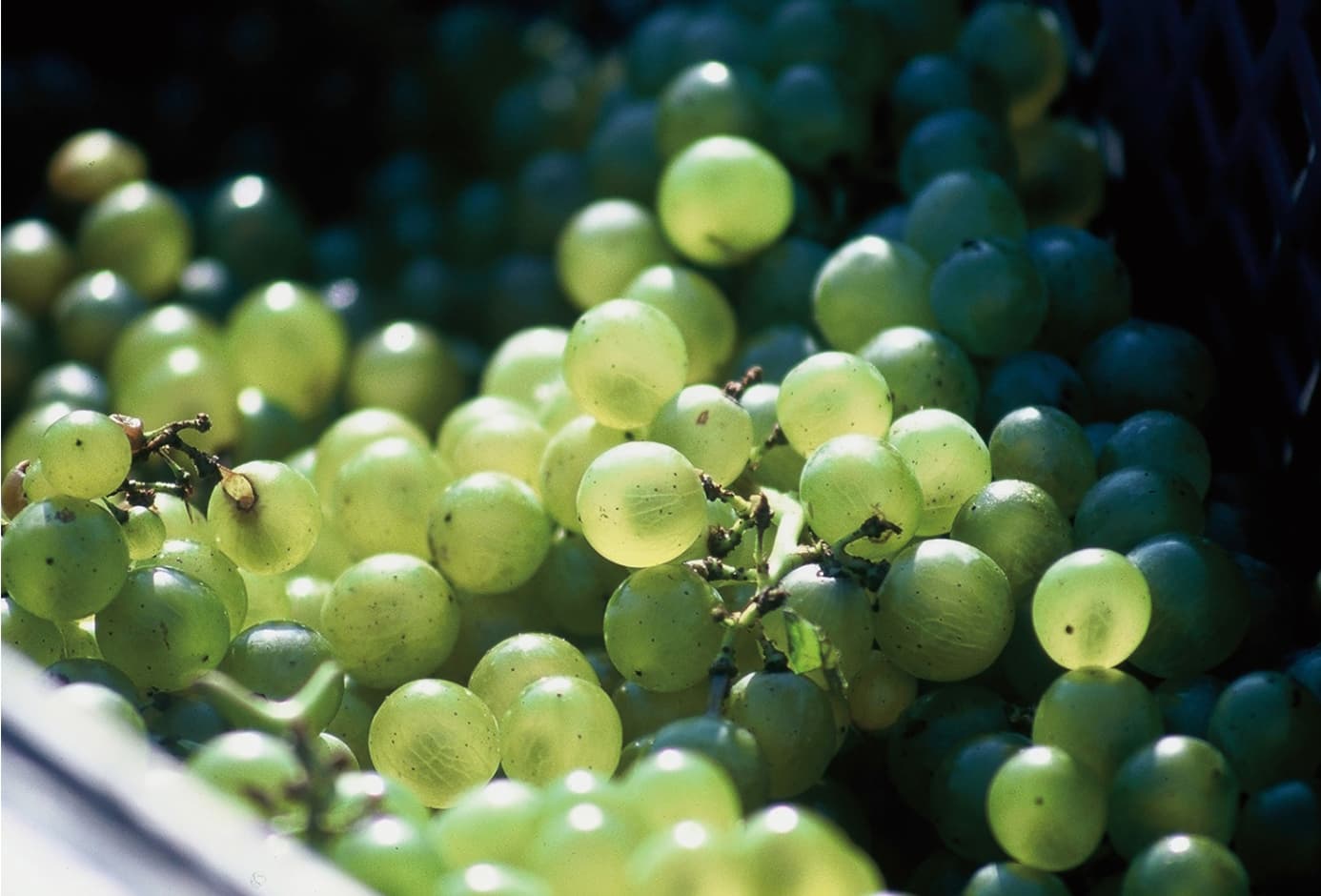Japanese Wine: Representative
European White Grape Varieties
Among the grapes used in Japanese wine, European white grape varieties hold an important position. These varieties have adapted to Japan's climate and have maintained their own unique wine cultures in each region, and are a symbol of the diversity of Japanese wine. This time, we will focus on “Chardonnay,” ”Pinot Gris,” “Sauvignon Blanc,” “Albariño,” and “Kerner” among European white grapes, and introduce the characteristics and wine making styles of each.
1.Chardonnay: the Most Widely Cultivated Western Wine Variety in Japan

One of the world’s most famous grape varieties, Chardonnay originated in Burgundy, France, and its adaptability has made it a staple across various wine regions worldwide. In Japan, Chardonnay is cultivated from Hokkaido in the north to Kyushu in the south, making it the most widely grown Western grape in Japan. Many Japanese wineries produce unique, expressive wines using this versatile variety.
With hints of pear and citrus fruits, Chardonnay’s true charm lies in its adaptability. Depending on the soil, environment, and winemaking method, its flavor profile varies widely. Known for reflecting terroir well, Chardonnay grown in Japan displays diverse flavors, ranging from crisp with lively acidity to rich, barrel-aged styles and sparkling wines made with secondary fermentation in the bottle. At "wa-syu," you can explore different Chardonnay varieties, making it a recommended grape for tastings.
2.Pinot Gris - A Grape with Great Potential
Known for its unique pinkish-gray color, Pinot Gris is a mutation of Pinot Noir. This variety, also called Pinot Grigio in Italy, is rising in global popularity.
From Pinot Noir’s Mutation to a Global Favorite
As a mutation of the Burgundy variety Pinot Noir, Pinot Gris (Pinot gris) is often called a "gray" grape for its unique pinkish-gray to bluish-purple hue. In Italy, it’s known as Pinot Grigio, and in Germany, as Ruländer (sweet) or Grauburgunder (dry). Pinot Gris produces mellow, full-bodied wines with a broad range of flavors, and has become increasingly popular worldwide.
Growing Popularity in Japan
Although it remains a relatively small crop in Japan, Pinot Gris is slowly becoming more popular, particularly in cool areas like Hokkaido and the Tohoku region. Some wineries even blend it with other varieties. For example, Fermier on the Niigata Wine Coast makes a rosé by blending Pinot Noir and Pinot Gris. This versatile grape pairs well with seafood and even pork or chicken dishes, making it worth a try.
Introduced by Hokkaido Wine in 1970, Pinot Gris has gradually expanded in cool regions, producing wines with a slight bitterness and moderate body. Recently, sparkling wines have also begun to be produced with this grape.
3.Sauvignon Blanc - A World-Famous White Grape
A representative white grape variety from France, Sauvignon Blanc is appreciated worldwide and is gradually being cultivated in Japanese wine regions as well.
Global Appeal with Green Flavors and Vibrant Acidity
Sauvignon Blanc has been cultivated in France’s Bordeaux and Loire regions for centuries and ranks just behind Chardonnay in global popularity. With notable acidity and a distinctive green aroma, it has an unmistakable flavor that is gaining popularity in Japan, particularly in Nagano, Shimane, and Yamanashi Prefectures.
Limited Production, But Growing Popularity in Japan
With citrus and grapefruit notes, occasionally hinting at passion fruit, Sauvignon Blanc is often blended to enhance other flavors. This grape’s fresh and clean taste pairs well with Japanese cuisine, such as sushi. In Japanese wines, it is sometimes blended with Niagara or Chardonnay to create unique flavors.
Sauvignon Blanc, a high-quality grape with the second-largest global production area for white wine grapes, has been increasingly grown in Japan’s cooler regions, such as Nagano and Hokkaido.
4.Albariño - A Rising Star in Japanese Wine

Originating in Spain, Albariño is a white grape that has recently gained attention as more Japanese wineries have begun cultivating it.
Albariño: A Spanish White Grape with a Coastal Mineral Profile
Albariño, a white grape from Spain’s Galicia region along the Atlantic coast, is a notable variety from Rias Baixas. Known for its vibrant aroma and rich acidity, Albariño thrives even in humid, rainy regions, producing wines with excellent balance and mineral content.
Rising Popularity in Japan
Although Albariño is not yet widely cultivated in Japan, interest is growing due to its suitability for Japan’s rainy climate. In particular, the Niigata Wine Coast along the coast of Kakudahama is recognized for pioneering Albariño production in Japan. This variety is becoming popular for its versatility in expressing a range of flavors.
In Japan, Albariño is also cultivated in Niigata and Oita Prefectures, producing wines with aromatic peach and fresh, deep flavors that complement seafood and Japanese cuisine.
Kerner - A German Variety Suited to Cold Climates
Kerner, a cold-resistant German white grape, is increasingly cultivated in Japan’s cool regions, such as Hokkaido and the Tohoku region.
Kerner: Aromatic and Versatile
Kerner, a staple German white wine grape, was developed in 1929. With a flavor profile similar to Riesling but with greater adaptability, Kerner is highly cold-resistant and can withstand temperatures as low as -10 degrees Celsius. In Japan, it is primarily grown in Hokkaido, where the climate resembles that of Germany.
A Grape Gaining Popularity Among Japanese Wineries
Kerner’s floral, muscat-like aroma and mild acidity make it popular for producing high-quality wines in colder Japanese regions. It is used for a variety of wines, including dry, semi-sweet, and sparkling wines, showcasing Kerner’s versatility.
Introduced from Germany to Hokkaido in 1973, Kerner is primarily cultivated in Hokkaido, producing wines with diverse styles, from dry to sparkling.
These European white grape varieties—Chardonnay, Pinot Gris, Sauvignon Blanc, Albariño, and Kerner—play a significant role in Japan’s evolving wine culture. Each grape has unique flavors and aromas that resonate well with Japanese tastes and cuisine. Japanese wineries continue to explore these varieties, offering diverse expressions that promise continued growth for Japanese wine.



